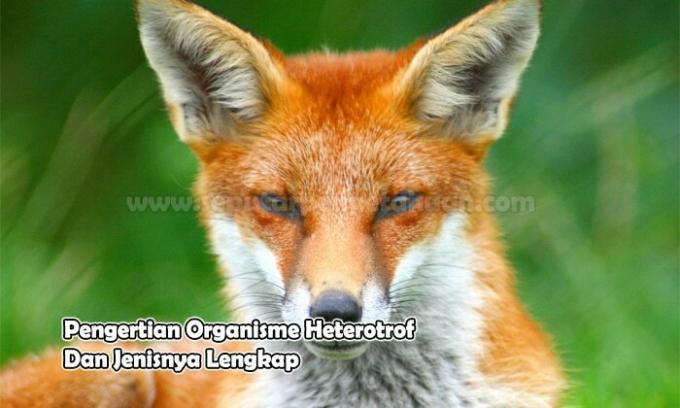Definition of Heterotrophic Organisms and Their Types (Full Discussion)
Definition of Heterotrophic Organisms and Their Types (Full Discussion) – This time we will discuss about heterotrophs. What are heterotrophs? Surely not many people know and have heard of this word what else for someone who doesn't like biology.
list of contents
-
Definition of Heterotrophic Organisms and Their Types (Full Discussion)
- Definition of Heterotrophic Organisms
-
Types of Heterotrophic Organisms
- 1. Herbivore
- 2. omnivore
- 3. Carnivore
- 4. Scavenger (Carrion Eater)
- 5. Destritivor
- Share this:
- Related posts:
Definition of Heterotrophic Organisms and Their Types (Full Discussion)
However, for someone who really likes biology and is also involved in biology education, it is certainly not foreign to the word heterotroph, for that we are will begin to discuss and learn what exactly is meant by heterotrophs, for more details, let us proceed to the following discussion.
Definition of Heterotrophic Organisms
Heterotrophs are organisms that require organic compounds in which carbon is extracted for their growth. While heterotrophs are better known as consumers or cannot make their own food in the food chain and can only depend on others. And most heterotrophs are parasites. The heterotrophs include all animals, fungi and bacteria. Heterotrophs are the opposite of autotrophs.
And another understanding of heterotrophs is organisms that can't arrange things inorganic substances into organic substances so that to get food must be by eating organisms that other.
Types of Heterotrophic Organisms
Heterotrophs have various types, and based on the type of food, heterotrophs can be divided into herbivores, omnivores, carnivores, scavengers, and detritivores. To make it clearer what are the types of heterotrophs, let's discuss the continuation of this article.
1. Herbivore
Herbivores are plant eaters, at the level of the food chain, herbivores in the source group include cattle, rabbits, deer, grasshoppers and caterpillars.
2. omnivore
Omnivores are all eaters, omnivores can also eat plants and meat. Meanwhile, those included in the omnivore category are bears, orangutans, monkeys, gibbons, and humans. In general, omnivorous animals usually dominate the ecosystem unless the ecosystem is being disturbed. Humans are omnivorous organisms that can adapt in all kinds of environmental conditions, and mainly because of their reasoning. That's why humans dominate the earth.
3. Carnivore
Carnivores are meat eaters. Animals that fall into the carnivore group because they prey on other animals, these animals are also called predators. Predators get their prey by hunting it. Examples of carnivores are frogs, spiders, snakes, eagles, and cats.
4. Scavenger (Carrion Eater)
Scavengers are animals that eat the bodies of other animals that have died or are also called carrion users or scavengers. An example of a scavenger or scavenger is the vulture.

5. Destritivor
Destritivores are fragments of organisms in the form of leaf flakes. Stems or pieces of animals called detritus. Organisms that eat detritus are called setritivores, for example, earthworms, soil insects and termites.
That's the explanation that has been given regarding Definition of Heterotrophic Organisms and Their Types (Full Discussion), heterotrophs are better known as consumers or better known as parasites. Hopefully the explanation given can be useful for readers
Read also:
- Characteristics of Viruses, Monera and Fungi (Most Complete Discussion)
- Definition of Food Chain and Kinds (Complete Discussion)
- Carnivorous Animals: Definition, Characteristics and Examples
- Definition of Abiotic and Abiotic Components (Complete)
- Understanding Bacteria, Types, Characteristics and Roles for Human Life
